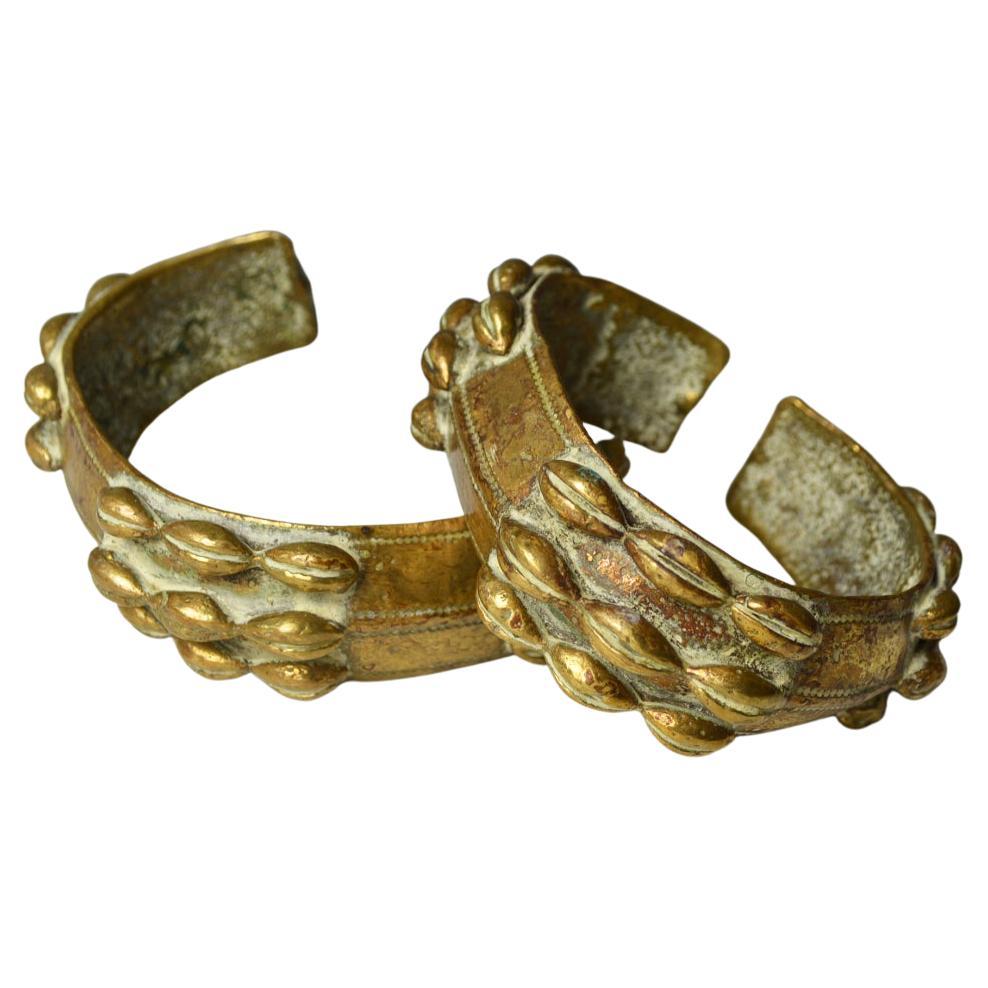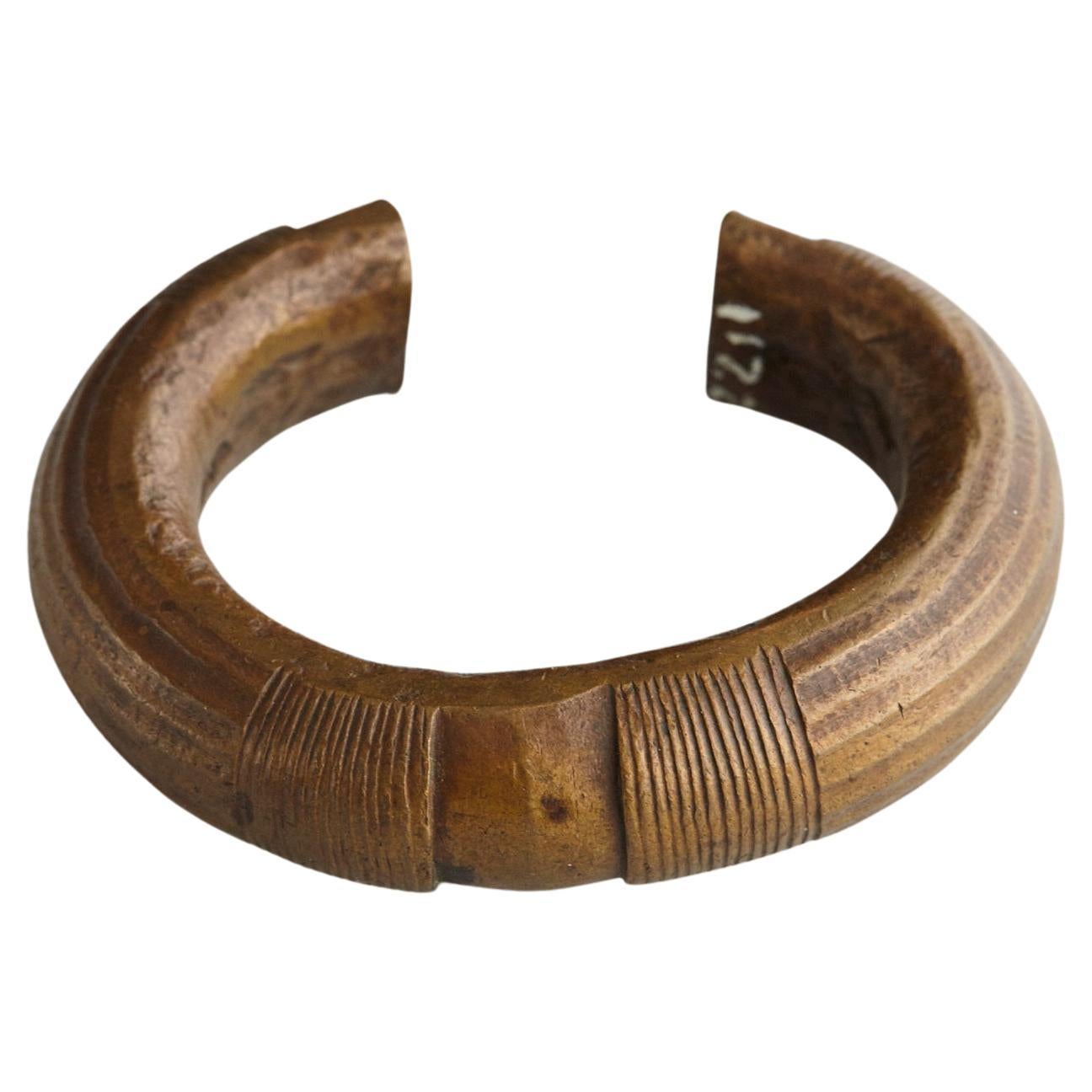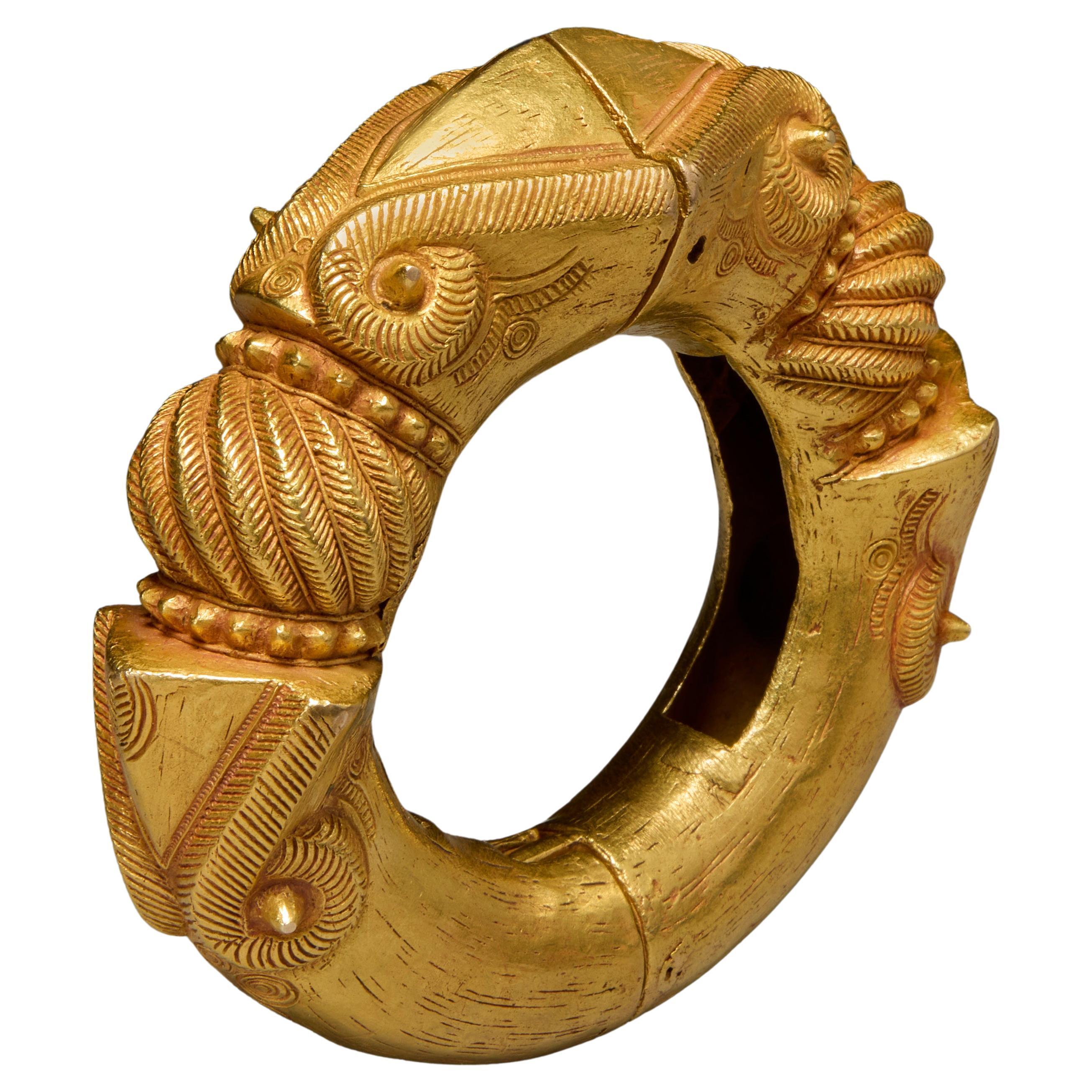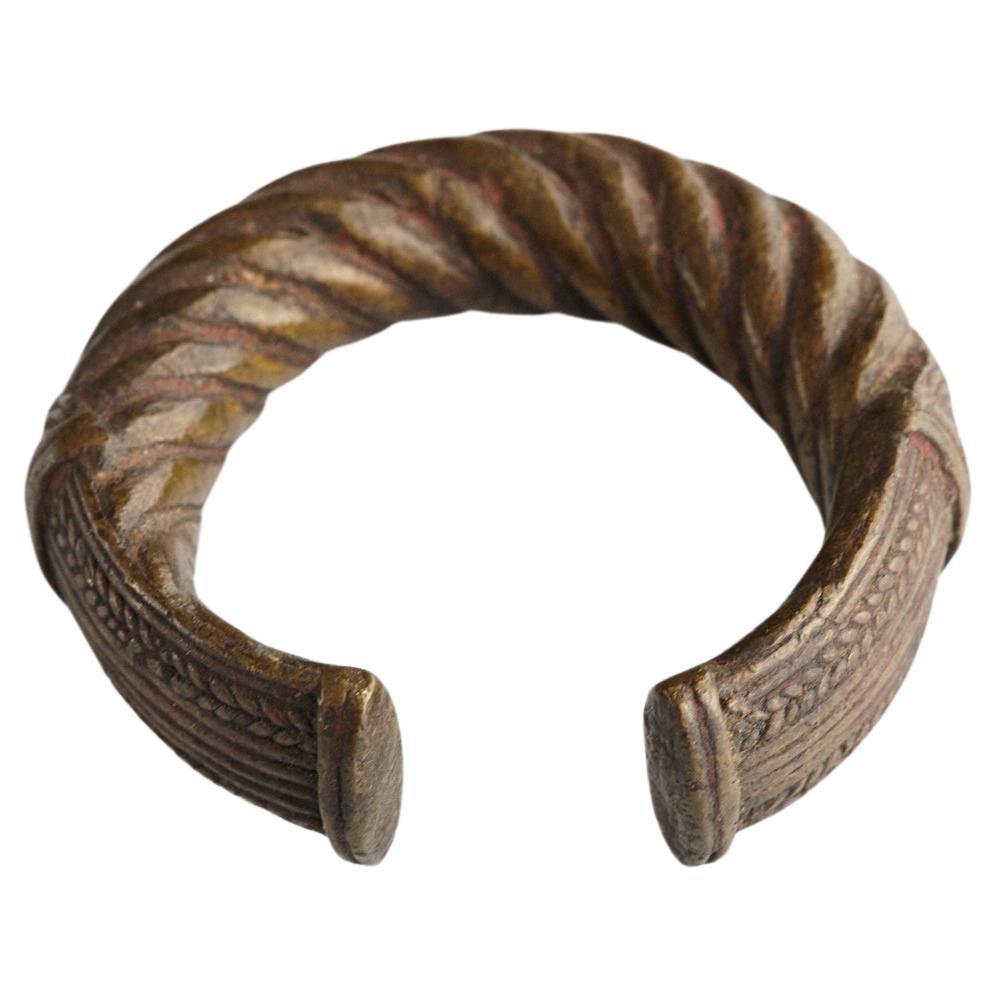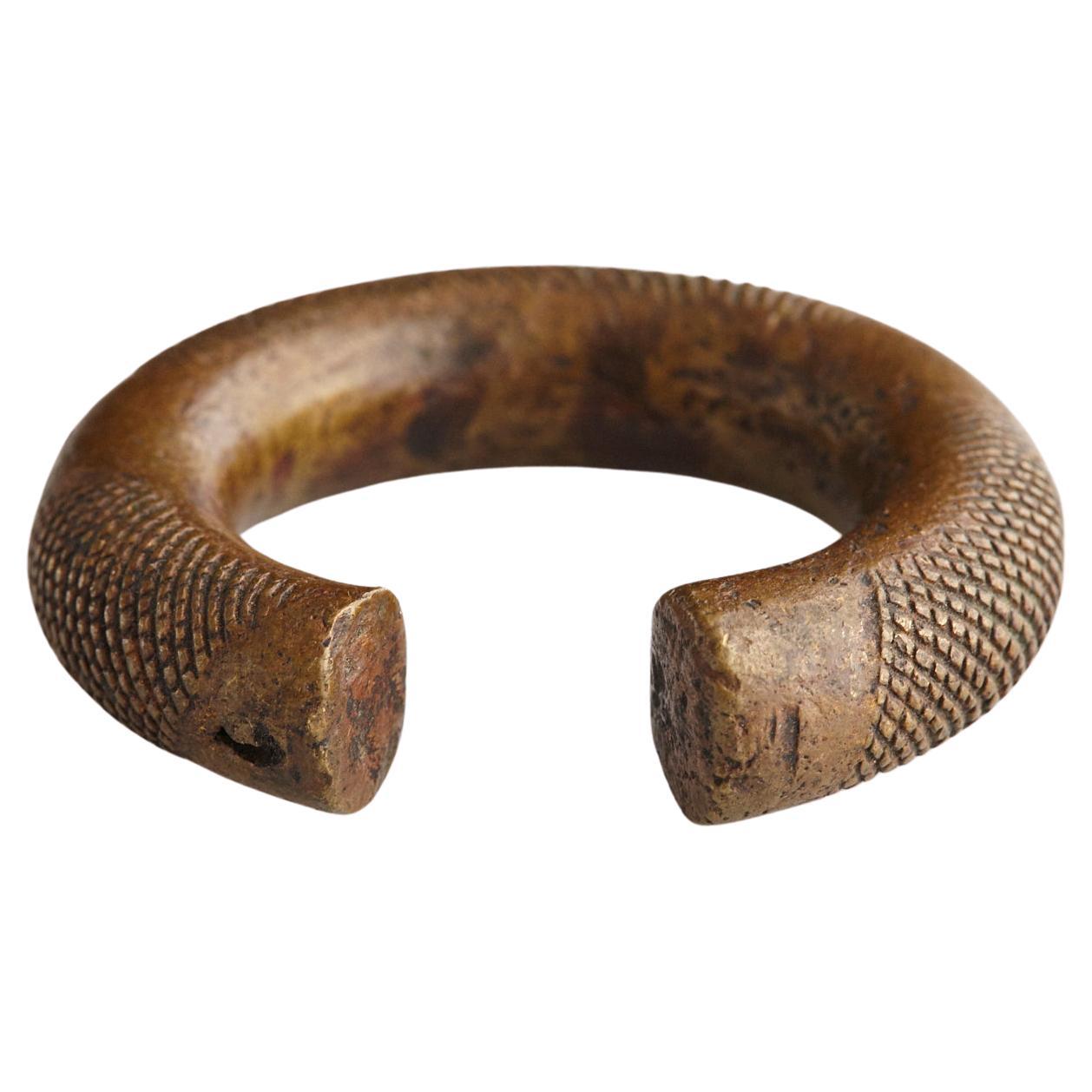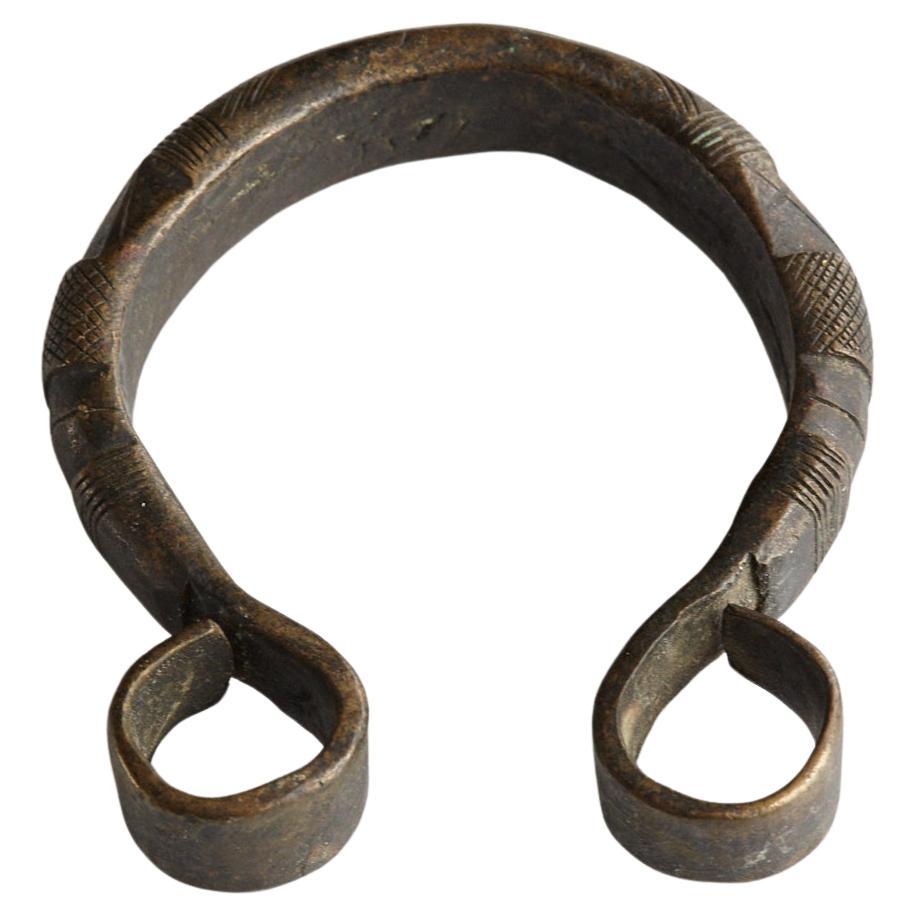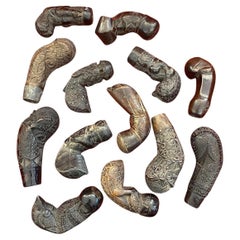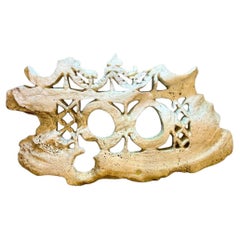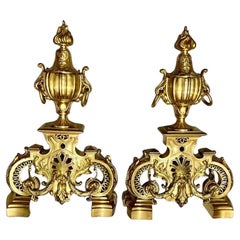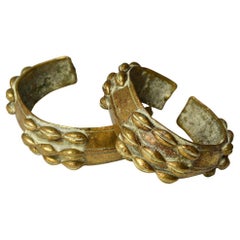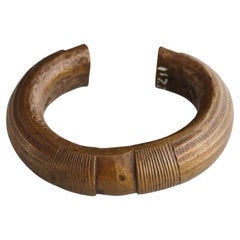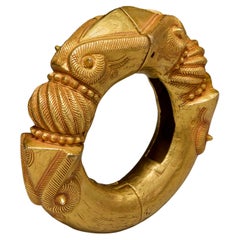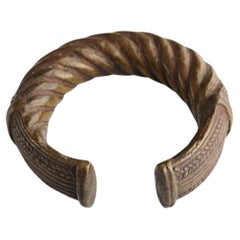Items Similar to Nigerian 19th Century Gold and bronze trade currency Bracelet
Video Loading
Want more images or videos?
Request additional images or videos from the seller
1 of 15
Nigerian 19th Century Gold and bronze trade currency Bracelet
$1,437.77
£1,070.33
€1,200
CA$1,969.39
A$2,190.39
CHF 1,143.75
MX$26,654.72
NOK 14,607.48
SEK 13,699.24
DKK 9,135.18
Shipping
Retrieving quote...The 1stDibs Promise:
Authenticity Guarantee,
Money-Back Guarantee,
24-Hour Cancellation
About the Item
We present you an 19th century antique Nigerian high quality bronze GOLD PLATED bracelet currency traditionally used in monetary functions and exchange in the tribe as well as body ornamentation for women.
Its unique design and pure, flamboyant aesthetic make this rare piece a highly collectible work of art.
We sell it with his base.
- Dimensions:Height: 4.93 in (12.5 cm)Width: 3.55 in (9 cm)Depth: 1.38 in (3.5 cm)
- Style:Tribal (In the Style Of)
- Materials and Techniques:
- Place of Origin:
- Period:
- Date of Manufacture:19th Century
- Condition:Wear consistent with age and use.
- Seller Location:NICE, FR
- Reference Number:1stDibs: LU9202241493212
About the Seller
5.0
Gold Seller
Premium sellers maintaining a 4.3+ rating and 24-hour response times
Established in 2003
1stDibs seller since 2023
28 sales on 1stDibs
Typical response time: 5 hours
- ShippingRetrieving quote...Shipping from: NICE, France
- Return Policy
Authenticity Guarantee
In the unlikely event there’s an issue with an item’s authenticity, contact us within 1 year for a full refund. DetailsMoney-Back Guarantee
If your item is not as described, is damaged in transit, or does not arrive, contact us within 7 days for a full refund. Details24-Hour Cancellation
You have a 24-hour grace period in which to reconsider your purchase, with no questions asked.Vetted Professional Sellers
Our world-class sellers must adhere to strict standards for service and quality, maintaining the integrity of our listings.Price-Match Guarantee
If you find that a seller listed the same item for a lower price elsewhere, we’ll match it.Trusted Global Delivery
Our best-in-class carrier network provides specialized shipping options worldwide, including custom delivery.More From This Seller
View AllCollection of Kriss Handles, Java, Indonesia, Late 18th / Early 19th Century
Located in NICE, FR
A set of thirteen kriss handles originating from Java, Indonesia, dating from the late 18th to early 19th century.
Beautiful aged patina in dark or amber tones. Exquisite carving wo...
Category
Antique 1790s Indonesian Tribal Tribal Art
Materials
Wood
Ciwara Bambara headdress in carved wood and basketry, Mali, Early 20th century
Located in NICE, FR
A very pleasing Ciwara crest, singularly small and accompanied by its original headdress, depicting a stylized antelope leaning on a pangolin. The antelope is ridden by a woman, and white horsehair has been added to the tips of the horns. The piece is carefully sculpted, with notches decorating the bodies of the antelope and the pangolin.
Rattan, plant fiber, cowries, wood Very fine velvety mat patina, Circa 1950
An animal called Ciwara is said to have taught the Bambara how to cultivate the land, and during agrarian ceremonies, they recall the myth through the stylized representation of an antelope whose name ci wara...
Category
Early 20th Century Malian Tribal Tribal Art
Materials
Wood
Shell Plaque (Barava) from Solomon Islands, 19th Century
Located in NICE, FR
Objects crafted from the shell of the giant Tridacna clam, also known as the fossilized giant clam, held great value among numerous Melanesian peoples. The artistry of working with f...
Category
Antique 19th Century Solomon Islands Tribal Tribal Art
Materials
Shell
19th Century Andirons in Gilt Bronze, Signed by Ferdinand Barbedienne
By Ferdinand Barbedienne
Located in NICE, FR
We present you with this beautiful pair of large andirons with their gilded bronze bar. They exemplify the exuberant Napoleon III style and they originate from the late 19th century....
Category
Antique 19th Century French Napoleon III Fireplace Tools and Chimney Pots
Materials
Bronze
$4,025 Sale Price / set
20% Off
Ndoma Baule Portrait Mask, Ivory Coast, Wood, lacquered patina, Circa 1930
Located in NICE, FR
"Ndoma” Baule Portrait Mask, Ivory Coast, Circa 1930 Wood, heavy wood with deep brown-black lacquered patina.
A superb old hardwood dance mask featuring an ...
Category
Vintage 1930s Tribal Tribal Art
Materials
Wood
19th Century Gilt Bronze Candleholders, in the style of Ernest Meissonier
By Jean-Louis-Ernest Meissonier
Located in NICE, FR
We present you with this wonderful and extremely rare pair of candleholders from the late 19th century Napoleon III era, embodying the exceptionally ornamental and dramatic Rococo st...
Category
Antique Late 19th Century French Rococo Candlesticks
Materials
Bronze
You May Also Like
African Tribal Benin Brass Armlets Nigeria Antique Jewelry
Located in London, GB
Benin brass Armlets or Anklets
A pair of heavy Brass armlets with three rows of cowrie shells, Certainly a well worn pair
one slightly twisted. They have been cleaned at some point.
Rare pieces. Benin 19th century and earlier.
For similar pair see re thinking pit Pitt Rivers pit rivers museum online collection Oxford UK.
Category
Early 20th Century Congolese Tribal Art
Materials
Hardwood
Bronze Currency Bracelet/Manilla, Dogon People, Burkina Faso, 19th c. - No 2
Located in Aramits, Nouvelle-Aquitaine
19th-century bronze currency bracelet / Manilla in horseshoe form with fixed opening. Intricate graphical design with lines and accent points on the top and at both tips. This type o...
Category
Antique Mid-19th Century Burkinabe Tribal Tribal Art
Materials
Brass
Rare Gold Ashanti Royal Bracelet from Jacaranda Tribal
Located in New York, NY
This magnificent gold bracelet was made for Ashanti royalty.
The Ashanti Kingdom's wealth was significantly based on gold-mining and trading in gold, as well as agriculture. The ki...
Category
Early 20th Century Ghanaian Tribal Art
Materials
Gold
Bronze Currency Bracelet/Manilla, Dogon People, Burkina Faso, 19th c. - No 5
Located in Aramits, Nouvelle-Aquitaine
19th-century bronze currency bracelet / Manilla in horseshoe form with fixed opening. Intricate graphical swirled rope work design and tips are shaped with large flat ends with geome...
Category
Antique Mid-19th Century Burkinabe Tribal Tribal Art
Materials
Bronze
Bronze Currency Bracelet/Manilla, Dogon People, Burkina Faso, 19th c. - No 3
Located in Aramits, Nouvelle-Aquitaine
19th-century bronze currency bracelet / Manilla in horseshoe form with fixed opening. Intricate graphical design with a lattice pattern. This type of bracelet was worn or used by the...
Category
Antique Mid-19th Century Burkinabe Tribal Tribal Art
Materials
Bronze
Solid Brass Currency Bracelet/Manilla, Gurma People, Burkina Faso, Early 20th C
Located in Aramits, Nouvelle-Aquitaine
Early 20th-century brass currency bracelet / Manilla in horseshoe form with fixed opening. Hand-stamped and shaped graphical motives and the ti...
Category
Early 20th Century Burkinabe Tribal Tribal Art
Materials
Brass
More Ways To Browse
Antique Bronze Bracelet
Bronze Gold Plated Bracelet
Nigerian Antique
Currency Bracelet
African Currency Bracelet
African Bronze Currency
Ibeji Twins
Tribal Knife
African Staff
Currency Bracelet
Polynesian Art
Large Tribal Necklace
Papua New Guinea Figure
Tribal Sword
Congo Statue
Papua New Guinea Carving
Tribal Bamileke
African Currency Bracelet
